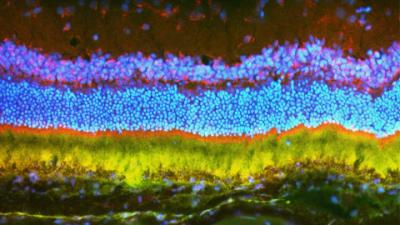
Image credit: Johns Hopkins University
In experiments in rats and mice, two Johns Hopkins scientists — an engineer and an ophthalmologist — report the successful use of nanoparticles to deliver gene therapy for blinding eye disease. A uniquely engineered large molecule allows researchers to compact large bundles of therapeutic DNA to be delivered into the cells of the eye.
The research, described July 3 in Science Advances, provides evidence of the potential value of nanoparticle-delivered gene therapy to treat wet age-related macular degeneration — an eye disease characterized by abnormal blood vessel growth that damages the light-sensitive tissue in the back of the eye — as well as more rare, inherited blinding diseases of the retina.